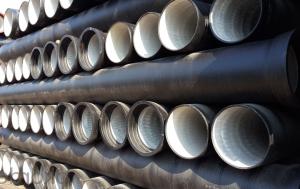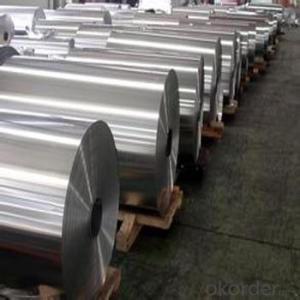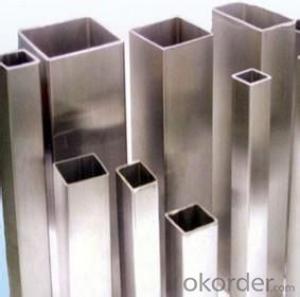Stainless Steel Smoker Pipe
Stainless Steel Smoker Pipe Related Searches
Best Paint For Stainless Steel Blanket Insulation For Steel Buildings Primer For Galvanized Steel Foam Filter For Stainless Steel H S Code For Stainless Steel Surface Grinding Wheels For Stainless Steel Surface Grinding Wheels For Hardened Steel Hole Saw For Stainless Steel Paint For Stainless Steel Stainless Steel For BbqHot Searches
Steel Mesh Panels For Sale Price For Stainless Steel Scrap Scrap Price For Stainless Steel Price For Stainless Steel Stainless Steel Tank For Sale Stainless Steel Sheets For Sale Cheap High Tea Sets For Sale Stainless Steel Tanks For Sale Stainless Steel For Sale High Density Fiberboard For Sale Solar Hot Water Collectors For Sale Scaffolding For Sale In Uae Scaffolding For Sale In Ireland Scaffolding For Sale In Houston Type Of Inverter For Solar Price Of Shipping Containers For Sale Types Of Inverter For Solar Stock Price For Aluminum Used Solar Inverter For Sale Steel Mesh Panels For SaleStainless Steel Smoker Pipe Supplier & Manufacturer from China
Okorder.com is a professional Stainless Steel Smoker Pipe supplier & manufacturer, offers integrated one-stop services including real-time quoting and online cargo tracking. We are funded by CNBM Group, a Fortune 500 enterprise and the largest Stainless Steel Smoker Pipe firm in China.Hot Products
FAQ
- Stainless steel pipes are suitable for automotive applications, offering exceptional resistance to corrosion and heat. Because of this, they are an excellent option for automobiles in challenging environments, such as those with high temperatures, moisture, and road salt. Stainless steel pipes are frequently utilized in exhaust systems, fuel lines, and other vehicle components. Compared to other materials, they possess superior strength and durability, resulting in longer-lasting automotive parts and decreased necessity for frequent replacements. Furthermore, stainless steel pipes have a pleasing appearance and can be readily customized to meet precise design specifications for automotive use.
- Yes, stainless steel pipes are suitable for use in oil refineries. Stainless steel is highly corrosion resistant, which is essential in an environment with high levels of corrosive substances such as crude oil and various chemicals used in refining processes. Stainless steel pipes are capable of withstanding high temperatures and pressures, making them ideal for transporting oil and gas within the refinery. Additionally, stainless steel pipes have low maintenance requirements and a long lifespan, reducing the need for frequent replacements and minimizing downtime. Overall, stainless steel pipes provide the durability, reliability, and resistance to corrosion necessary for the demanding conditions of oil refineries.
- The composition and properties distinguish 17-7 stainless steel pipes from 15-7 stainless steel pipes. 17-7 stainless steel is characterized as a precipitation-hardening stainless steel with approximately 17% chromium and 7% nickel. It is also alloyed with aluminum, enabling it to undergo heat treatment for achieving high strength and hardness. This stainless steel grade is renowned for its exceptional corrosion resistance, good formability, and high strength. It finds application in industries that demand high strength and corrosion resistance, such as aerospace components, springs, and chemical processing equipment. Contrarily, 15-7 stainless steel is classified as a semi-austenitic precipitation-hardening stainless steel comprising about 15% chromium and 7% nickel. Additionally, it is enriched with 2% molybdenum, which enhances its corrosion resistance. This stainless steel grade offers favorable mechanical properties, high strength, and excellent corrosion resistance. It is commonly utilized in fields requiring high strength, good formability, and resistance to stress corrosion cracking, such as springs, washers, and medical devices. To summarize, although both 17-7 and 15-7 stainless steel pipes exhibit excellent corrosion resistance and high strength, their composition and specific properties distinguish them. 17-7 stainless steel contains aluminum to enhance its heat treatability, while 15-7 stainless steel includes molybdenum for improved corrosion resistance. The selection between these two grades depends on the specific application requirements, encompassing strength, formability, and resistance to corrosion or stress corrosion cracking.
- Indeed, extreme weather conditions pose no challenge to stainless steel pipes, as they are highly suitable. Renowned for their remarkable corrosion resistance, stainless steel pipes are perfectly equipped to endure severe weather conditions such as extreme temperatures, heavy rainfall, and high levels of humidity. Moreover, the exceptional strength and durability of stainless steel pipes enable them to withstand the impact of powerful winds, storms, and other extreme weather phenomena. Furthermore, stainless steel remains unaffected by UV radiation, ensuring that it will not deteriorate or lose its color when exposed to intense sunlight. Consequently, stainless steel pipes prove to be a dependable and enduring choice for any application requiring resistance to extreme weather conditions.
- Yes, stainless steel pipes can be insulated with polyetherimide. Polyetherimide (PEI) is a high-performance thermoplastic that has excellent thermal stability and insulating properties. It can be used as an insulation material for various applications, including pipe insulation. PEI offers good resistance to heat, chemicals, and electrical conductivity, making it suitable for insulating stainless steel pipes in different industries such as oil and gas, chemical processing, and aerospace. Additionally, PEI has a high glass transition temperature, which allows it to withstand high temperatures without melting or deforming, further enhancing its suitability for insulating stainless steel pipes.
- The chemical composition and intended applications set 410 and 316 stainless steel pipes apart. 410 stainless steel, a martensitic type, contains a higher carbon content ranging from 0.15% to 0.25% and a relatively lower chromium content between 11.5% and 13.5%. This composition grants 410 stainless steel pipes remarkable strength, hardness, and wear resistance. It is frequently employed in situations where corrosion resistance is not the primary concern, such as cutting tools, knives, and firearm components. On the flip side, 316 stainless steel is an austenitic variety with a higher chromium content, ranging from 16% to 18%, along with a significant nickel content between 10% and 14%. This composition provides 316 stainless steel pipes with exceptional corrosion resistance, particularly in environments containing chlorides or other corrosive agents. It finds widespread use in industries such as chemical processing, pharmaceuticals, food processing, and marine applications. To sum up, the primary distinction between 410 and 316 stainless steel pipes lies in their chemical composition and resulting properties. 410 stainless steel offers superior strength and hardness but has lower corrosion resistance compared to 316 stainless steel, which boasts high corrosion resistance but may have slightly reduced strength and hardness. The selection between the two depends on the specific requirements of the application, with 410 stainless steel being better suited for situations where strength and wear resistance are paramount, while 316 stainless steel is the preferred choice for applications demanding excellent corrosion resistance.
- Yes, stainless steel pipes can be used for food processing equipment. Stainless steel is a preferred material for food processing due to its corrosion resistance, easy cleaning, and durability. It is also non-reactive, ensuring that it does not contaminate the food being processed.
- There are several advantages of using stainless steel pipes in the automotive industry. Firstly, stainless steel pipes offer excellent corrosion resistance, which is crucial in automotive applications where the pipes are exposed to various environmental conditions. Secondly, they have high strength and durability, making them reliable for withstanding high pressure and temperature conditions. Additionally, stainless steel pipes have good thermal conductivity, allowing for efficient heat transfer and preventing overheating in the vehicle's engine or exhaust system. Lastly, they are lightweight compared to other materials, contributing to improved fuel efficiency and overall vehicle performance.














































